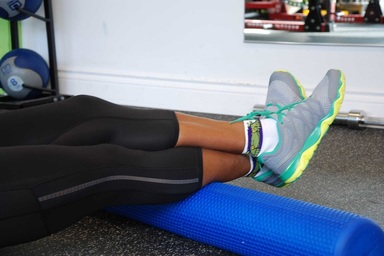 Have you ever had lower back pain and could barely sit up from your bed in the morning? Yep! It has probably happened to most of us. Saturday morning on March 5th 2016, I could hardly get up from bed. My muscles were sore and stiff from my lumbar spine down to my gastrocnemius . At that time I knew it was tight muscles due to lack of rolling and stretches from my intense leg work-out on Friday. I had so much on the go that I didn’t save enough time to do some self-myofascial release and stretches. Throughout that weekend, I spent some time painfully rolling and stretching to relax the muscles and increase blood flow. By Sunday evening my muscles felt normal again and my lower back pain was gone. Since this experience, I wanted to share with you the importance of self-myofascial release. Foam rolling is a self-myofascial release (SMR) stretching technique that has been embraced throughout the fitness industry. During exercise micro-tears and swelling in muscle fibers acurs, which impinge on nerves and vessels. Over time, this can develop into adhesions and scar tissue. The adhesions reduce the elasticity of the soft tissues and can eventually cause a permanent change in the soft tissue structure. Foam rolling focuses on alleviating these adhesions (also known as “trigger points” or “knots”) to restore optimal muscle motion and function increasing blood-flow within the muscle, lengthens your muscles, and breaks up adhesions and scar tissue. Using the foam roller can also deliver improvements in flexibility, muscle recovery, movement efficiency, inhibiting overactive muscles, correct muscle imbalances, and pain reduction with just minutes of application. I call it " my cheap massage”.This effective and simple to do technique delivers positive, feel good results. Foam rollers have become easily accessible. You can purchase them in just about any fitness stores or department stores to bring home for a minimal investment. Foam rollers vary in density, surface structure, and even temperature modifications. No matter what variation selected, foam rolling focuses on the neural and fascial systems in the body that can be negatively influenced by poor posture, repetitive motion, or dysfunctional movements. These mechanically stressful actions are recognized as an injury by the body, initiating a repair process called the Cumulative Injury Cycle. This cycle follows a path of inflammation, tightness in the muscles that causes spasm, and the development of soft tissue adhesions that can lead to altered neuromuscular control and muscle imbalance. Skeletal muscle tissue contains muscle spindles and Golgi tendon organs (GTO), two neural receptors. Muscle spindles are sensory receptors running parallel to muscle fibers, sensitive to a change and rate of muscle lengthening. When the pressure of the body against the foam roller is sustained on the trigger point, the GTO will “turn off” the muscle spindle activity allowing the muscle fibers to stretch, unknot, and realign. Foam rolling can be painful, but you need only 5 to 15 minutes at a time to reap the benefit. Foam rolling is best before and after a workout followed by static stretch of the muscles. This helps your muscles return to the proper length and recover even faster because it can prevent the buildup of scar tissue. Foam rolling can also be done as part of warming up and cooling down. Most people can enjoy foam rolling on their own once you’ve been instructed on how to properly perform these exercises. During the exercises it is important to maintain core stability. Pull the navel in towards the spine to maintain stability in the lumbo-pelvic-hip complex. Take the time to experience the exercises and discover how slightly modifying positions or angles can target different areas of the muscle. Foam rolling is not appropriate for everyone, including those with congestive heart failure, kidney failure, or any organ failure, bleeding disorders, or contagious skin conditions. If you have medical issues, seek the advice of a medical professional before starting SMR or foam rolling activities. Here are some foam roller exercises to get you started on a path to moving and feeling better. Piriformis (gluteal region) Sit on top of the foam roller, positioned on the back of the hip, crossing one foot over the opposite knee. Lean into the hip of the crossed leg. Slowly roll on the posterior hip area to find the tender spot. Roll for 30-90 seconds until the discomfort is reduced. Repeat on other side. Adductors Lie face down and place one thigh over the foam roller. Slowly roll the upper, inner thigh area. If you find a tender spot, focus on that spot for a few more seconds. Roll for 30-90 seconds until the discomfort is reduced. Switch leg and repeat. Calves/Hamstrings Place foam roller under the mid-calf. Cross the opposite leg over the top of the other to increase pressure. Slowly roll calf area. Then roll the back of the leg (hamstrings) towards the gluteus. If you find a tender spot, focus on that spot for a few more seconds. Roll for 30-90 seconds until the discomfort is reduced. Switch leg and repeat. Tensor Fascia Latae/Quadriceps Lie on one side with the foam roller just in front of the hip. Cross the top leg over the lower leg, placing that foot on the floor. Slowly roll from the hip joint down toward the knee. This muscle is inferior to the IT band and usually the sorest spot to roll. Use your hands on the floor to control the amount of pressure you can tolerate. Then roll over face down to roll the quadriceps (front of the leg). Slowly roll from the hip towards the knee. If you find a tender spot, focus on that spot for a few more seconds. Roll for 30-90 seconds until the discomfort is reduced. Repeat other leg. Thorasic Spine Lie on the floor with the foam roller behind the upper back. Cross arms to opposite shoulders. Raise hips off the floor and slowly roll back and forth. If you find a tender spot, focus on that spot for a few more seconds. Roll for 30-90 seconds until the discomfort is reduced. Latissimus Dorsi Lie on one side with the arm closest to the ground outstretched with thumb facing upwards. Place the foam roller under the arm close to the shoulder blades. Slowly roll back and forth. If you find a tender spot, focus on that spot for a few more seconds. Roll for 30-90 seconds until the discomfort is reduced. Repeat on other side. Website: http://www.natatia.com
Email: [email protected] Phone: 613-913-5435 My mailing address: 11840 HWY 15 North, Smiths Falls ON K7A 4S4 February 2016 Natatia's One On One Fitness* All rights reserved. Comments are closed.
|
Categories
All
Author BioNatatia Gemmell. |
Functional Performance Fitness
|
Settlers Ridge Centre 275 Brockville St, Unit 14 Smiths Falls, ON K7A 4Z6 Phone: (613) 205-1234 Email: [email protected] Staffed Gym Hours Monday - Friday: 8 am - 8 pm Saturday: 8 am - 12 pm 24 Hour Gym 24 hour with key fob access Privacy Policy Terms of Use |

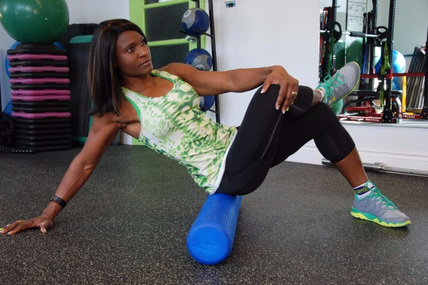
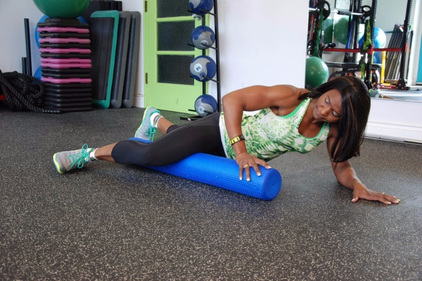
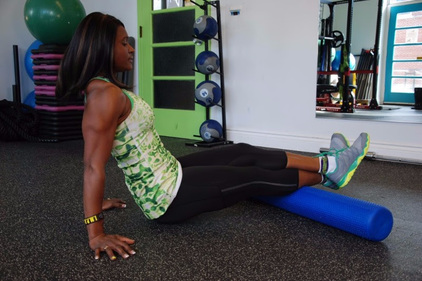
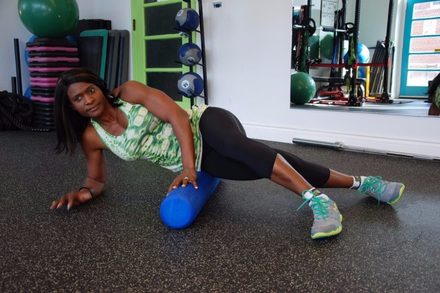
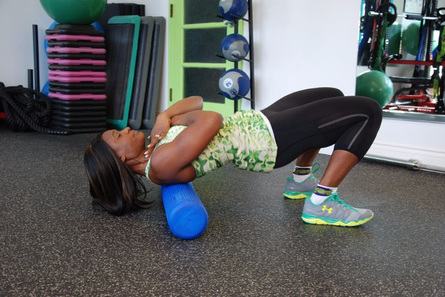
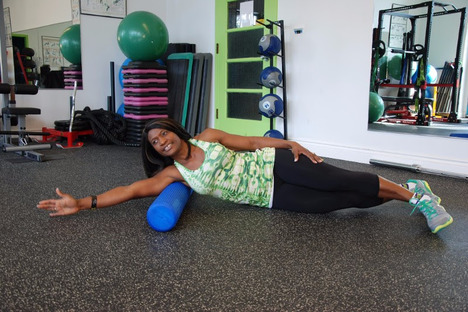
 RSS Feed
RSS Feed